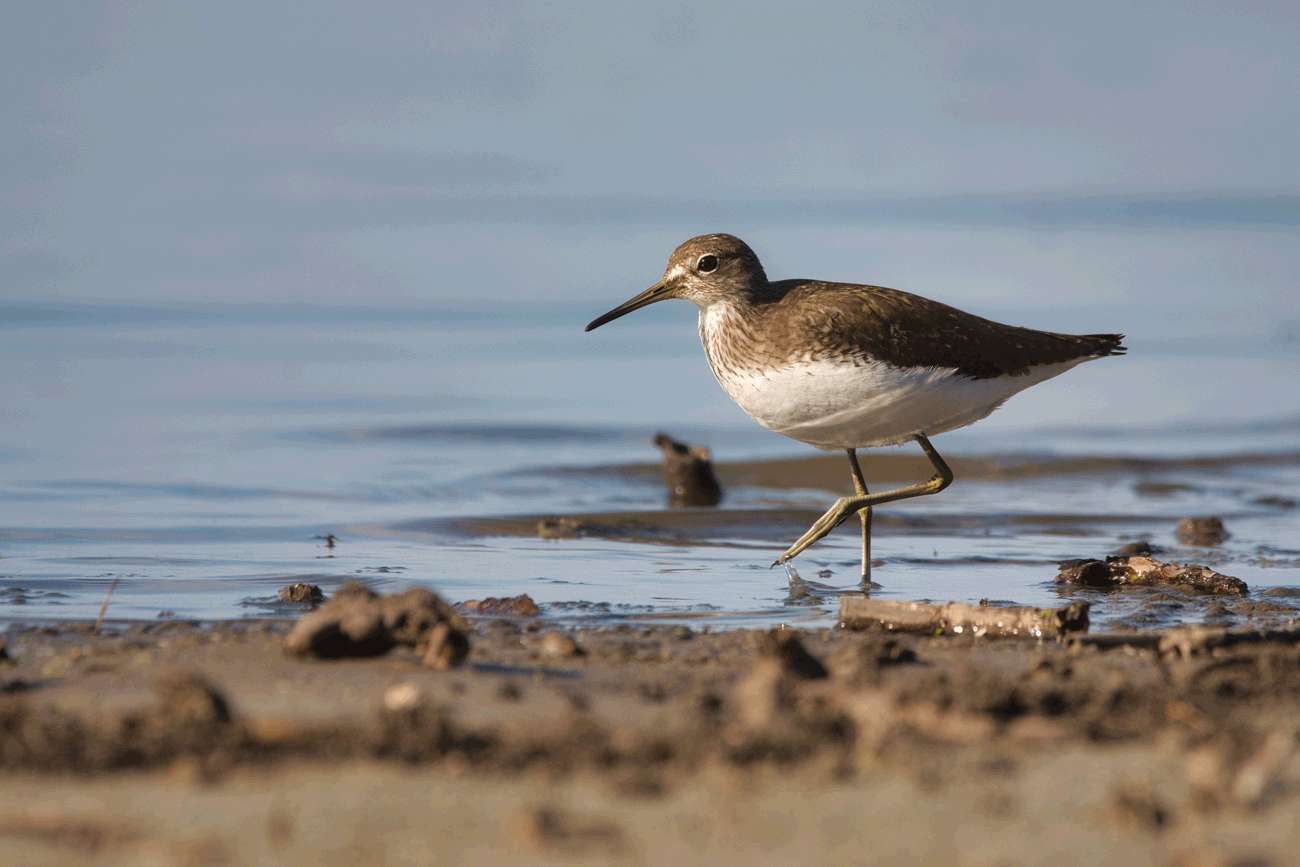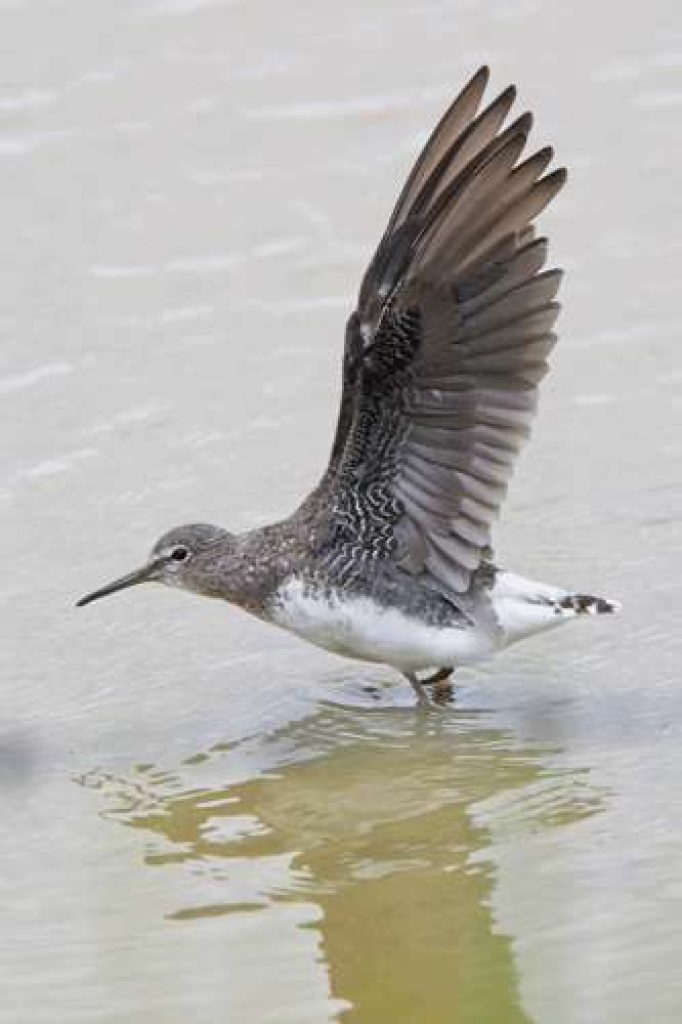
Autumn brings birders hope of a visit from a rarity or scarce visitor on its southerly migration. I go out hopefully, looking in likely spots around our fields and heaths, aiming to identify every individual bird I see so that nothing is missed. You can be sure the one you don’t look at properly is the special one.
One bird has, until now, always eluded me around here – and nearly everyone else. The Green Sandpiper, affectionately known as the ‘Green Sand’. We shorten long names because by the time you have said the full one it could have flown and people will have missed it.
There is only one record from the Cranleigh area in the historic record books too. And that was last century. I suspect they must pass us by annually but are not seen, identified or reported. This small wader forages along the shallow edges of pools, ponds, and streams. Around Cranleigh we don’t really have the ideal habitat but I would have expected to encounter one before during my 40 years of being on the lookout.
Often these timid birds are only discovered because the finder unwittingly disturbs them from their hidden feeding spot. Then they fly off fast on long, pointed wings, invariably betraying themselves with their distinctive high pitched alarm call, described best as ‘twit-wit-wit’.

I’ve never been lucky enough to even hear one in the area. Maybe they are too high up as they pass over on migration between central Africa and their breeding grounds, which stretch east from Scandinavia to as far as the Sea of Okhotsk. But last year gave me new hope however as in mid-August friends and I at Leith Hill saw two flying west (towards Cranleigh!) at probably 1,200 feet. Amazingly, their journey was taking them over the Greensand Way, the 108-mile rambling route which starts in Haslemere and ends near the coast in Kent!
This year, with increasing reports of Green Sandpipers from well watched waters in Surrey during July’s drought I set off, ever hopeful. I went to a muddy farmland pool I know whose edges had been exposed by the receding water. It looked a likely candidate. No joy.
Just over a week later I returned – and to my utter delight there it was. A Green Sandpiper! I only found it because it took off from a hidden corner, revealing its distinctive white rump and apparently dark brownish, unbarred wings. It called a few times and then landed further away on the exposed mud margins, allowing good views of its olive-toned and delicately spotted upperparts, a streaked breast, white eye rings and greenish legs.
So at last I’d caught up with my 158th species for my Cranleigh and Ewhurst ‘patch’ – which I have dubbed the Isles of Surrey. This Green Sand was typically nervous but stayed for at least three days, giving decent views as it fed, bobbing its head and body up and down at the water’s edge before resting on the baked ground.
Some of these waders do overwinter in Britain but I like to think this one is maybe in somewhere like The Gambia now. Next Spring it and other Green Sands begin their return journey to a northern boggy forest where they breed well out of the mud in a tree, using the old nest of a Song Thrush or a Squirrel’s dray.
I’ll keep an eye and an ear open.
Well, you never know…






